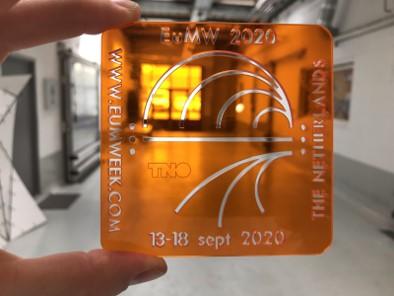

Although this example may seem extreme, it is a fact that engineers continue to use faster switching transistors to increase efficiency. The device that carries the control information to each MOSFET must be able to withstand this level of common-mode interference. As an example, a half bridge circuit that switches between +250 V and -250 V in 100 ns creates a common-mode transient signal of 5000 V/s with an amplitude of 500 V (see Figure 2).

This rapid switching creates a large voltage swing across the input to output of the gate drive circuitry. The floating common of the gate drive circuitry rapidly switches between the positive and negative power supplies. How does this operation create a common-mode problem? The input of each gate drive circuitry is referenced to the ground of the digital control circuitry the output common, on the other hand, is floating and referenced to the source of its associated power transistor. When set B turns on, set A turns off, and the polarity of the current through the inductive load is reversed. Current flows from the positive supply, through transistor A1, through the load, and through transistor A2. When transistor set A turns on, set B turns off. In a fullbridge inverter application like that shown in Figure 1, the source of one set of transistors (A1, B1) is attached to the drain of a second set of transistors (A2, B2). The power inverter is generally used to produce an AC output from a DC input.
#SMITH CHART FOR DUMMIES FULL#
Full bridge inverters are commonly found in motor-speed control and switching A full-bridge power inverter, shown in Figure 1, is a good example of an application that can exhibit large amounts of common-mode noise. Common-mode interference that exceeds the maximum specification might result in abnormal voltage transitions or excessive noise on the output signal.Ĭommon-mode signals can originate from several different sources. In order to be complete, the CMTR should also include the amplitude of the common-mode voltage that can be tolerated. It is usually given in volts per microsecond. CMTR describes the maximum tolerable rate-of-rise (or fall) of a common-mode voltage. Another way to specify CMR is as a common-mode transient rejection (CMTR). This specification is often called the common-mode rejection ratio, or CMRR. The CMR of analog devices is commonly specified in dB as the ratio of the differential mode gain to the common-mode gain. This value specifies the maximum common-mode voltage amplitude that can be applied to the device without causing a problem. The common-mode specification is sometimes given as CMV, or common-mode voltage.
#SMITH CHART FOR DUMMIES DRIVER#
In such an application, the driver circuits of the power transistors rise and fall hundreds of volts with respect to signal ground in only tens of nanoseconds.Ĭommon-mode rejection (CMR) is a measure of the ability of a device to tolerate common-mode noise. An example of this is the half bridge power inverter. An inherent common- mode signal is one in which the circuit itself causes the interference. In this case, the noise signal is “common” to each of the two wires. A good example of common-mode noise is the 60-Hz signal induced on a pair of wires by nearby power lines. The overall effect is that excessive common-mode noise causes spurious results at the output, disrupting safe, precise measurements.Ĭommon-mode interference is sometimes inherent in a system design, but most often it is inductively or capacitively coupled from an external source. A common-mode signal is a signal that appears common to either set of floating points. Any device or system with either its input or its output floating may be susceptible to common-mode noise.

This application note describes sources of common-mode problems, presents possible solutions, and concludes with a description of Avago Technologies’ approach to addressing common-mode noise.Ĭommon-mode noise problems exist in many electrical circuits. If a system is connected and running but only produces erroneous data, common-mode noise may be the reason. However, common-mode interference manifests itself in many ways therefore, it may be hard to determine whether or not this is the cause of your circuit’s misbehavior. Once a common-mode problem is identified, there are several ways that it can be resolved. Once a common-mode problem is identified, there are several ways that it can be resolved.Ĭircuit designers often encounter the adverse effects of common-mode noise on a design. Circuit designers often encounter the adverse effects of common-mode noise on a design.


 0 kommentar(er)
0 kommentar(er)
